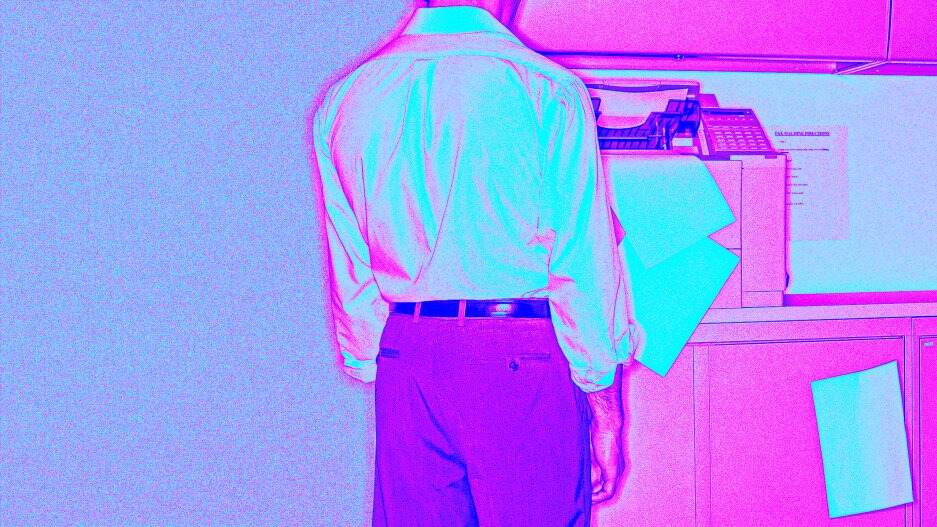- | 9:00 am
Can’t anyone build a decent printer?
I can’t quite get away with not owning a printer—yet. But my headaches with the ones I’ve owned are making that scenario sound more appealing all the time.

SAN FRANCISCO—Following the resignation of Apple founder Steve Jobs, incoming CEO Tim Cook called a meeting of shareholders and members of the press Thursday morning to announce that he envisioned printers as the company’s future. “Laser, ink-jet, double-sided, color, black-and-white—the future of technology is in printers. I am absolutely convinced of that,” Cook explained to a packed auditorium as a montage of printers and people using printers played on a screen behind him.
—The Onion, August 25 2011
When America’s Finest News Source™ reports something, you know it’s absurdist fantasy. That’s kind of the point. But if Apple had gone all-in on printing, the world might actually be a better place.
At least, that’s how I feel at the moment. Once again, a printer I’ve owned for only a few years has become unusable with seemingly no fix. Once again, I’ve gone printer shopping and haven’t been thrilled with any of my options. And my new printer has already taunted me with problems I didn’t even know a printer could have.
My old printer was an Epson WorkForce Pro inkjet model. To keep this account of why I’m no longer using it short: Epson’s micro piezo printheads tend to clog, especially if you don’t print much. The issue can become so overwhelming there’s nothing you can do about it, even if you resort to trying hacks from YouTube videos. This was my second WorkForce Pro to clog to the point of unusability; a third one lost its ability to scan.
So this time, I swore off Epson and bought an HP OfficeJet Pro 7740, a similar multifunction inkjet printer, which, like my Epsons, is capable of large-format printing and scanning. Judged purely on print quality, it’s impressive, producing crisper output on bargain-basement paper than the Epsons. And HP’s printhead technology apparently doesn’t present any serious hazards relating to clogging.
But when I noted on Mastodon that I’d abandoned Epson for HP, one wiseguy told me I was replacing one set of problems with another. How right he was.
For starters, the OfficeJet’s dinky touchscreen is maddening, at least if you’re doing something like typing in a password. The printer connected to my Wi-Fi but claimed to have some problem relating to IP addresses—one I hadn’t encountered before and wasn’t sure how to fix. Scanning to Dropbox takes forever and maxes out at a barely tolerable 200-dpi resolution. And twice in the first week or so of owning this printer, it crashed with a blue screen, like a glitchy Windows 98 PC—which seems to be something that this model just does. It’s one of the worst out-of-box experiences I’ve had with a new device in years.
HP’s most notorious trait as a maker of inkjet printers is the extreme measures it takes to prevent you from using anything but its own pricey ink cartridges. I bristle at such behavior, on principle. But my new HP’s cost-per-page does seem meaningfully lower than with my old Epsons, and I’ve had bad luck with third-party ink in the past. So I’m grudgingly willing to cut the company some slack on this one point.
Of course, the high cost of ink stems from the decision the entire industry made long ago to sell the printers at temptingly low prices, and then shake us down every time we replace the cartridges. If we buy a subsidized printer but get our ink from some other company, that whole model breaks down. But in recent years, several major manufacturers have offered an alternative: Somewhat costlier printers that use bottled ink and have much lower costs per page.
Epson pioneered this approach with its EcoTank models. All credit to the company for coming up with the option, but it’s selling these printers with a promotional campaign featuring Shaquille O’Neal and the tagline, “Don’t get cartridged”—while continuing to sell models using the cartridges that the EcoTank campaign calls “tiny” and “expensive.” The hypocrisy at play is mind-blowing. (By contrast, HP’s pitch for its similar Smart Tank models seems to go out of its way to avoid suggesting there’s anything wrong with the company’s other printers.)
Beyond the ink shenanigans, part of the problem with modern printers may be unconstrained feature creep. In 1994, I bought an Epson Stylus Color printer for $500. It printed (very nicely for its time), and that was it. My more recent Epsons and my new HP print, scan, and copy—all at large-format sizes—and if I still had a landline, they’d fax, too. They offer huge paper capacities, can print on both sides of the sheet, and sport automatic document feeders. And they can do it all over a wireless network. In theory, they’re 10 times the printer my 1994 Epson was for a little over half the price, even though the fundamentals of printing technology haven’t gone through any Moore’s Law-style exponential improvements. That doesn’t sound like a formula for rock-solid product quality.
Is there a way out of all this? Anecdotally, people who own Brother printers seem like a surprisingly happy lot. (I didn’t buy the Brother I was considering because its paper handling and scan quality get so-so reviews.) Ditching inkjet printing altogether for a laser might help, too. But I’m addicted to large-format printing and scanning, and nobody makes an appropriately equipped color laser printer designed and priced for mere mortals.








































